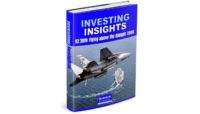Key point: With the new financial year approaching, now is the time to bring your self-managed superannuation fund’s investment strategy up to date and stay in the ATO’s good books.
Note: This article by Tim Mackay was originally published in the Australian Financial Review. You can view it on the AFR website [here] ($paywall)
With the new financial year approaching, now is the time to bring your self-managed superannuation fund’s investment strategy up to date and stay in the ATO’s good books.
In 2019, I highlighted the importance of the Australian Tax Office’s much-criticised letter to self-managed superannuation funds (SMSFs) asking: “Is your SMSF investment strategy meeting diversification requirements?”
The ATO deliberately forced investors to ask themselves difficult questions about their SMSF investment strategy and putting their eggs in one basket. In 2020, amid the continuing COVID-19 pandemic, the ATO’s 2019 intervention looks incredibly prescient.
Frankly, I think creating a future-proof investment strategy is one of the smartest ways you can grow your retirement savings. It’s a high-level road map showing where you need to go and how to get there.
Legally, your SMSF must have an investment strategy. Both the Superannuation Industry (Supervision) Act (Section 52(6)) and Regulations (Regulation 4.09) require it.
The ATO says you must review it at least once a year. Importantly, the ATO warns that you should review it when trigger events, such as market corrections, occur. And we’ve just had an almighty market correction.
So with the new financial year fast approaching, now is the time to bring your SMSF investment strategy up to date.
Next steps
First, list your asset classes, the risk you are willing to take and the return you expect from taking that risk. For a balanced SMSF, you may construct a portfolio that targets a return of inflation plus 2 to 3 per cent.
SMSF members must submit their application through myGov between now and June 30 to secure the right to tap $10,000 from their super because of COVID-19.
Here’s an end-of-year guide for SMSF trustees
For your growth allocation you could target Australian equity 10 to 25 per cent; property 5 to 10 per cent; international equity unhedged 5 to 15 per cent and hedged 5 to 15 per cent.
For your defensive allocation you could target domestic fixed interest 15 to 25 per cent; international fixed interest 15 to 25 per cent; and cash 3 to 10 per cent.
The above strategy neatly meets your legal requirement to consider SMSF risk, return, composition and diversification. However, I’d also include a caveat that allows material portfolio rebalancing in uncertain markets.
Document that when your market outlook turns negative, you can increase cash to 100 per cent and decrease other asset classes to zero.
The ATO accepts that short-term variations to your documented investment targets don’t constitute an investment strategy breach. Regardless, such a caveat allows you to be defensive for longer, without breaching fund rules.
Your investment strategy must document the liquidity risk of investments. If your SMSF invests mainly in ASX-traded blue chip stocks, your liquidity risk will be relatively low, even in volatile markets.
Documentation is key
If you target high dividend-paying stocks, document the higher cash flow risk if dividends potentially fall. Coupled with rock-bottom interest rates, you may also lower your documented expected return.
With less money coming in, document how your fund will pay tax liabilities and fund expenses and pension payments.
If you invest in less-traded small cap stocks, document the higher liquidity risk. If you invest via exchange traded funds, the ETF may be only as liquid as the least liquid investment held in the ETF. Consider investing in larger, more liquid ETFs.
SMSF members owning residential or commercial property face higher liquidity risk, which can be made worse by leverage.
If rent falls or stops, you can’t sell a dining room to fund a cash-flow shortfall or to repay a loan if a covenant is breached. Document how you will manage cash-flow and liquidity risk, especially if you are funding pensions or property loan payments.
Even though you may be the lead investor in your SMSF, your investment strategy can’t just reflect your wishes. It must factor in the objectives, age, accumulation or pension status and employment status of each SMSF member.
Lastly, your investment strategy must address the insurance needs of each member. You don’t need to hold insurance (death, income, trauma, total and permanent disability, and so on) but you must show you considered it.
Your investment strategy isn’t merely a document you dust off and sign every June 30. It’s important because every single investment decision in your SMSF must be in accordance with your documented investment strategy. If you haven’t updated it since the recent market upheaval, now is the perfect time to do it.
Tim Mackay is an independent advisor at Quantum Financial. You can view his personal website at www.theindependentfinancialadvisor.com.au
Other Australian Financial Review articles by Tim Mackay you may find interesting:
- How to defend your SMSF from cyber attacks
- Key questions before you help the kids financially
- Lessons in philanthropy
- SMSFs with $5m-plus own 25pc of all DIY fund assets
- The good, the bad & the ugly of ASIC’s SMSF fact sheet
- How to pass on your SMSF wealth effectively
- Time for a portfolio fine-tune
- Why politicians need to understand the true nature of SMSFs
- Industry funds’ DIY options could help you keep franking credits
- Complexity helps justify fees
- Top 100 SMSFs control $8 billion
- Banking royal commission: what SMSF investors need to know
- An SMSF action plan to keep your fund running smoothly
- Why inviting your kids into SMSF is a bad idea
- How to simplify your self-managed superannuation fund
- How to keep your SMSF alive
- When to close your SMSF
- Why SMSF advisers need to lift their game
- Should you really set up a self-managed superannuation fund?
- Who to include in your self-managed super fund
- Opt in for long-term profits
- Restoring trust in financial advice








Leave A Comment